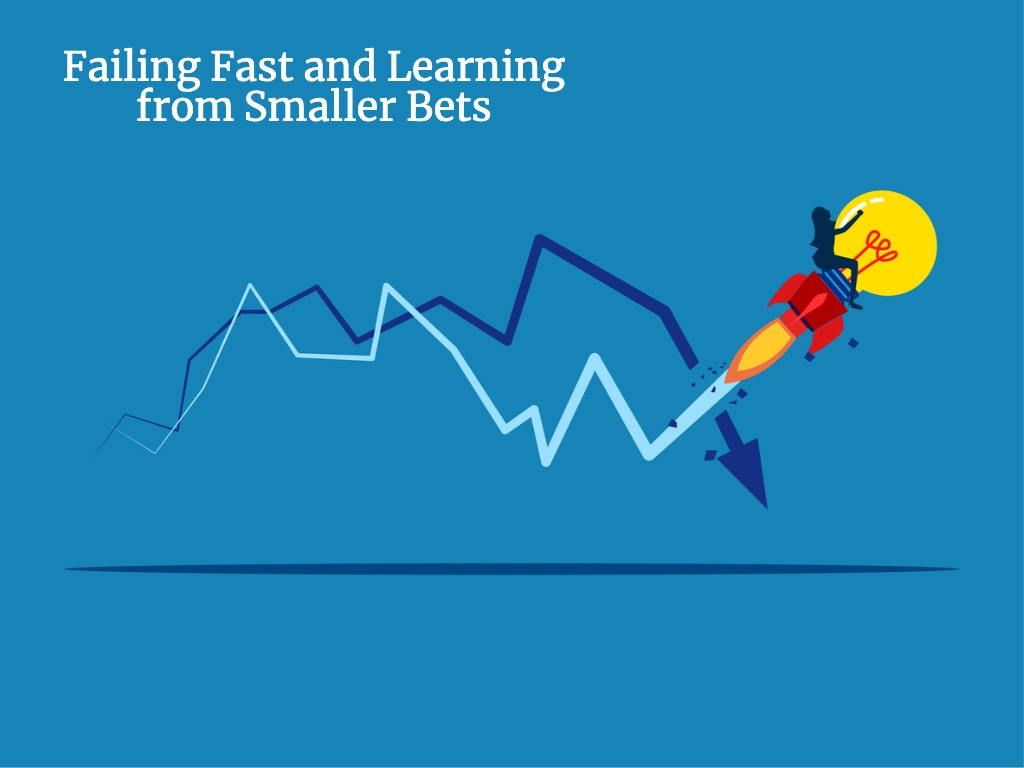When growing a business, the best investments often start small and build momentum. Consider a blackjack game: even as the action unfolds quickly, the most experienced players aren’t just hoping for luck. They’re using a strategy, carefully deciding if a particular hand warrants a bet of one chip, two chips, three, or even more. This approach, grounded in a keen sense of probability, can teach business leaders valuable lessons about managing risks when making strategic investments. By applying the same careful evaluation that blackjack players use, businesses can make smarter bets, minimize risk, and maximize returns.
The Perils of Going All-In with Strategic Investments: Big Bets Gone Bad
In the fast-paced business world, the excitement of a new strategy or opportunity can tempt leaders to “go all in,” committing significant resources upfront with the hope of substantial returns. But this approach can quickly backfire.
Take, for instance, a professional services company I recently worked with. The CEO identified a potentially game-changing opportunity in a new channel partnership that could lead to a steady stream of high-quality clients. Convinced of the channel’s potential, he made a substantial commitment: hiring a six-person team dedicated solely to managing this partnership. This commitment wasn’t just financial; it required time and resources to recruit, train, and prepare the team. In short, he placed a big bet, anticipating a solid return on investment.
However, the anticipated results didn’t materialize. Despite the team’s readiness, the promised leads trickled in at best, failing to meet even modest expectations. The channel partner didn’t deliver, and the services company was in a costly predicament. With little return on the investment, they now faced a team with insufficient work, tying up resources and impacting morale. This was a classic example of a big bet gone wrong: the company placed multiple “chips” on an untested strategy and came up empty.

Failing Fast and Learning from Smaller Bets
This scenario underscores a key lesson in business strategy: there are more ingenious ways to manage risk when making investments. Instead of going all-in, business leaders can adopt a “failing fast” approach—testing ideas on a smaller scale before committing significant resources. This mindset emphasizes experimentation and learning, enabling leaders to gather crucial data on what’s working and what’s not.
Imagine if the professional services company had taken smaller steps, betting “one chip” at a time to gauge the channel partner’s potential. By testing the waters with a smaller, more agile team, they could have quickly assessed the partnership’s effectiveness. With this data, they would have been better positioned to decide whether to increase their investment. Instead of committing to a full-scale rollout, they could have invested in a limited pilot, building confidence and understanding of the channel’s performance before scaling up.
This approach doesn’t aim for failure but positions failure as a learning tool. By gathering insights early on, businesses can make smarter, data-driven decisions about where to allocate resources, progressively increasing their “bets” on promising strategies while avoiding high-cost missteps.
Minimizing Risk with Scaled Investments
Blackjack players don’t make a single, giant bet without careful consideration, and neither should businesses. Strategic investments can be scaled up gradually using a “chip-by-chip” approach. This scaled approach minimizes risk while allowing leaders to assess each opportunity’s value and potential return before making a significant commitment.
For example, product development often involves substantial investment, from research and design to production and marketing. However, instead of diving in head-first, companies can start with a small “one-chip” bet: developing a prototype or minimum viable product (MVP). This MVP allows the company to test customer demand and gather feedback without investing in a production run. If the product resonates with consumers, the company can scale its investment—betting a second chip, then a third, to increase production and marketing efforts based on proven demand.
This iterative approach also applies to software development. Instead of dedicating a large team and budget to build a new product or service from scratch, software firms can make smaller “one-chip” bets on different ideas, launching beta versions or pilot programs to test the waters. Data from these trials then guides decision-making, helping the company determine which products warrant further investment. This approach is akin to placing a series of small, calculated bets rather than committing to a single large one.
By scaling investments based on real-world feedback, companies reduce risk and increase flexibility. If an initial idea fails to gain traction, they can pull back without the burden of a massive sunk cost. Cutting losses is far easier when you’ve only wagered one chip instead of going all-in.

Building a Portfolio of Bets: A Smarter Way to Make Strategic Investments
Strategic investments aren’t just about one-off decisions; they’re about building a balanced portfolio, just like a blackjack player with multiple chips on the table. Rather than placing all your bets on one opportunity, a diversified portfolio of smaller bets allows you to spread risk and maximize potential returns. In business, this could mean investing in various strategies or projects, each with its growth potential.
For example, consider a startup looking to expand. Instead of committing all resources to a single growth strategy, such as entering a new market, the startup could make smaller, parallel investments in several areas—such as developing new products, building a stronger brand, and expanding its customer service team. As the company gathers data on each initiative’s effectiveness, it can increase investment in the most promising areas while scaling back or discontinuing projects that don’t deliver.
This portfolio approach isn’t just about minimizing risk; it’s about building a robust strategy that can adapt to changing conditions. Markets evolve, customer preferences shift, and competitors emerge. By maintaining a portfolio of initiatives, businesses can respond flexibly, reallocating resources to the most promising areas.
Additionally, this diversified approach encourages a culture of innovation. When team members see that the company is willing to make small, calculated bets on new ideas, they’re more likely to propose creative solutions. Over time, this fosters an environment where intelligent risks are encouraged, experimentation is valued, and learning from successes and failures becomes part of the organizational DNA.
The Blackjack Framework for Strategic Success
The principles of blackjack provide a surprisingly relevant framework for managing strategic investments. Like blackjack players, successful business leaders understand the importance of evaluating risk, gathering data, and making calculated bets rather than emotional ones. They don’t put everything on the line with a single decision; they think about incremental investments and portfolio management.
When we adopt a blackjack-inspired mindset, we can avoid the “big bet” trap and manage our business with thoughtful, strategic choices. By gradually increasing our investment as the odds become more favorable, we stand a better chance of reaping the rewards—and when things don’t go as planned, we have the flexibility to cut our losses and pivot.
In a world where resources are limited and the competitive landscape constantly changes, it pays to think like a blackjack player. This doesn’t mean betting recklessly; it means approaching each decision strategically and continuously evaluating risk against reward. When we make a series of small, calculated bets rather than putting all our chips on one strategy, we set ourselves up for long-term success.
Like in blackjack, winning in business isn’t about luck—it’s about making smart bets and managing risk effectively. Following this approach can maximize your organization’s potential and create a foundation for sustainable growth. So the next time you face a big decision, think about how many “chips” you’re willing to wager—and whether that’s a bet worth taking.



